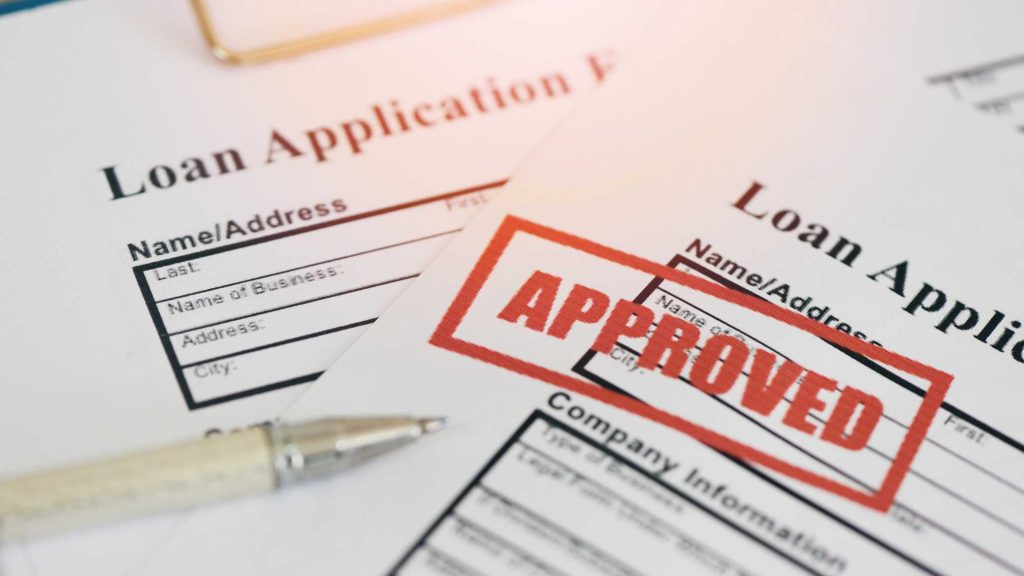Personal Loan Agreement : In 2025, the personal loan market has become more dynamic, digital, and accessible than ever before. With the growth of fintech apps, digital NBFCs, and quick loan disbursal platforms, more people are applying for personal loans to meet financial needs ranging from medical emergencies to wedding expenses and travel. However, while loan disbursement has become quicker, the importance of thoroughly understanding the personal loan agreement remains more vital than ever.
Table of Contents
This comprehensive guide will walk you through the critical things to know before signing a personal loan agreement in 2025, helping you avoid common financial pitfalls and ensuring you make informed borrowing decisions
What is a Personal Loan Agreement?

A personal loan agreement is a legally binding document signed between a borrower and a lender that outlines the terms and conditions of the loan. It includes all the vital information such as the loan amount, interest rate, repayment period, EMI schedule, default clauses, prepayment terms, and associated charges.
Also Read: Get ₹5,000 up to ₹5,00,000 Personal Loan
This document serves as the foundation of the loan contract and protects the rights of both parties. Whether the loan is sourced through a traditional bank, an NBFC, or a digital lending platform, the personal loan agreement is the most important piece of paperwork in the transaction
Why You Must Read the Loan Agreement Carefully
Many borrowers focus only on the interest rate or EMI amount and overlook the details embedded in the agreement. However, the loan agreement governs your entire loan lifecycle, including repayments, penalties, and legal obligations. Reading the document carefully helps you understand:
Your total liability, including hidden charges
Legal implications of defaulting on payments
Conditions under which the loan can be terminated or recalled
Your rights to prepayment, foreclosure, and refinancing
Understanding these aspects in advance can help you avoid surprises and build a stronger financial plan
Loan Amount and Disbursement Process
The first element you must verify in your personal loan agreement is the loan amount. Often, the sanctioned amount and disbursed amount differ due to processing fees, insurance premiums, or service charges deducted at the source. Make sure the document clearly states the exact disbursed amount and mode of credit, whether through direct bank transfer, UPI, or wallet
Ensure transparency about whether the loan amount includes upfront deductions and ask the lender for a break-up. This is particularly important when dealing with digital lenders, where deductions might include app subscription fees, document verification fees, or account handling charges
Applicable Interest Rate and Its Type
Interest rates are one of the most critical components of your loan agreement. There are generally two types of interest rates:
Fixed Interest Rate: The rate remains the same throughout the tenure
Floating Interest Rate: The rate may change based on market conditions
Your loan agreement must clearly mention the type of interest rate applicable, along with the annual percentage rate (APR), which includes interest and all associated costs. Even if the headline interest rate is low, the APR can give a clearer picture of the total borrowing cost
In 2025, many digital loan providers promote ‘low interest’ rates, but these often come with high APR due to hidden charges. Comparing APR instead of just nominal interest rates is a smart practice
Loan Tenure and Repayment Terms
The loan tenure determines how long you have to repay the loan and directly impacts your EMI amount. A longer tenure reduces EMIs but increases the overall interest paid. Your agreement should clearly define:
Repayment tenure in months or years
Number and frequency of EMI payments
Date of first and last EMI
Mode of repayment (auto-debit, cheque, ECS, UPI)
Ensure the repayment schedule is practical based on your monthly income and obligations. Additionally, confirm whether the agreement includes a grace period or allows flexible repayment options in case of emergencies
EMI Bounce Charges and Late Payment Penalties
Missing an EMI due to insufficient funds or technical issues can lead to hefty bounce charges. Most lenders charge between ₹250 to ₹750 per bounce in 2025, and this is clearly specified in the loan agreement. Late EMI payments also attract penalties in the range of 2% to 4% per month on the overdue amount
Even a single missed EMI can affect your credit score. Ensure that the agreement includes:
EMI due dates
Bounce charge amount
Late payment penalty rate
Any grace period available
Knowing these charges helps you stay disciplined with your EMI payments and avoid damage to your financial reputation
Prepayment and Foreclosure Rules
Borrowers often plan to repay their loans early to save on interest. However, many lenders include prepayment and foreclosure clauses in the agreement that impose additional fees. These charges vary by lender and may apply only within specific timeframes (e.g., 6 months from loan disbursal)
Check the following details in your agreement:
Minimum lock-in period before prepayment is allowed
Prepayment or foreclosure fee (fixed or percentage)
Whether part-prepayment is permitted
Any documents required for closure
In 2025, several digital lenders have started offering zero prepayment penalty options, especially on short-term personal loans. But it’s always best to confirm this before signing
Processing Fees and Additional Charges
Processing fees are typically 1% to 3% of the loan amount and are often deducted upfront before disbursing the loan. However, there can be several additional charges that are hidden in fine print. These may include:
Loan insurance premiums (optional or compulsory)
Document handling fees
Verification or doorstep service charges
Loan cancellation charges
Loan rescheduling or restructuring fees
Review this section carefully to understand the true cost of your loan. If any charge seems ambiguous, seek clarification from the lender
Co-applicant or Guarantor Liability

If your personal loan involves a co-applicant or guarantor, their liabilities should be clearly stated in the agreement. A co-applicant is equally responsible for repayment, while a guarantor becomes liable if the borrower defaults
Ensure the agreement outlines:
Roles and responsibilities of each party
Legal consequences in case of default
Consent from the co-applicant or guarantor
In 2025, digital lenders often skip guarantor requirements for smaller loans, but for larger personal loans, especially those above ₹5 lakhs, banks and NBFCs may still require a financial guarantor
Default Clauses and Legal Remedies
The default clause is a crucial part of the personal loan agreement. It defines what constitutes a default and what actions the lender can take. These actions may include:
Reporting to credit bureaus
Initiating legal proceedings
Recovering the amount through debt collection agencies
Seizing collateral (if any)
Ensure that the agreement mentions default timelines, notices before action, and your rights to resolve disputes. Understand the legal process involved and whether there’s a provision for mediation or arbitration
Your Credit Score Implications
While credit score may not be directly stated in the agreement, the lender reserves the right to report your payment behavior to credit bureaus like CIBIL, Experian, or CRIF. The agreement should specify:
Whether the loan is being reported
Reporting frequency
Right to access and correct credit reports
Late payments, defaults, or even frequent EMI rescheduling can lower your score. Being aware of this clause ensures that you treat the repayment schedule with priority and maintain a healthy credit profile in 2025
Dispute Resolution and Jurisdiction
Every personal loan agreement includes a dispute resolution clause. This clause specifies how and where disputes will be resolved. The document should outline:
Arbitration or court jurisdiction
Legal location (city/state of filing disputes)
Rights to appeal or review decisions
Many fintech lenders now offer consumer grievance redressal via online portals or dedicated helplines, but knowing your legal options gives you an upper hand in case of disagreements
Cancellation Policy and Cooling-Off Period
Some lenders allow you to cancel your loan within a few days of approval — known as a cooling-off period. This is especially common in app-based lending. The agreement should mention:
Time period allowed for cancellation
Conditions for refunding processing fees
Impact on your credit score (if any)
Review this clause carefully, especially if you’ve applied through an online loan aggregator or third-party platform
Digital Consent and e-Signatures in 2025
As lending goes digital in 2025, most personal loans are signed electronically through Aadhaar OTP, e-KYC, or biometric authentication. Ensure that the agreement includes:
Details of the digital signing process
Authentication methods used
Time stamp and IP address of signing
Your consent to share data with credit bureaus
Understanding this helps validate the authenticity of the loan and protects you from fraud
Top Tips Before Signing a Personal Loan Agreement in 2025
Read the full agreement word by word, even if it’s long or written in legal language
Ask the lender for a translated version in your preferred language if needed
Clarify all terms before signing; don’t rely on verbal assurances
Check for spelling errors, mismatched names, or incorrect loan amounts
Save a digital and printed copy of the signed agreement for future reference
Verify that all pages are stamped, signed, or digitally verified
Never sign a blank or partially filled loan agreement
Red Flags to Watch Out For
Unusually high processing or insurance fees
Missing repayment schedule or vague EMI clauses
Mandatory add-ons like app subscriptions or wallet top-ups
Aggressive upselling of insurance products or investment schemes
No mention of prepayment or foreclosure options
Inconsistent or hidden penalty clauses
Conclusion

A personal loan can be a powerful financial tool when used responsibly. But blindly signing a personal loan agreement without understanding its terms can result in unexpected financial burdens, legal complications, and a damaged credit history. In 2025, where instant loan approvals and app-based financing are the norm, it’s more important than ever to stay informed, cautious, and thorough
Buy Now : How To Invest Your Money – Master Class
By carefully reviewing each clause of the personal loan agreement — from interest rates and repayment schedules to default clauses and prepayment rules — you can protect yourself from unpleasant surprises and build a secure financial future. Don’t rush the process just for fast approval. Take time to ask questions, compare offers, and read the agreement in detail before signing
Disclaimer : This content is for informational purposes only and does not constitute financial or legal advice. Loan agreements vary from lender to lender, and terms may change over time. Always consult with your bank, NBFC, or a legal advisor before making any financial decisions
Keywords : Personal Loan Agreement – Personal Loan Agreement 2025








